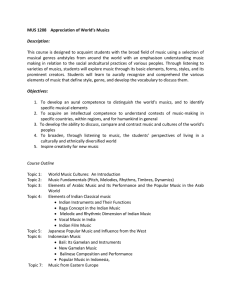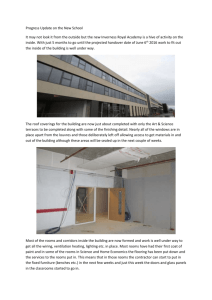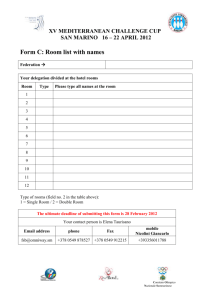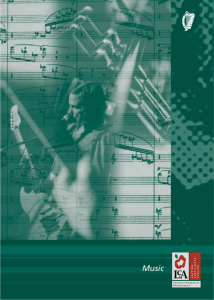Sound, Space and Object (9-11 July, 2009, CRASSH, Cambridge)
advertisement
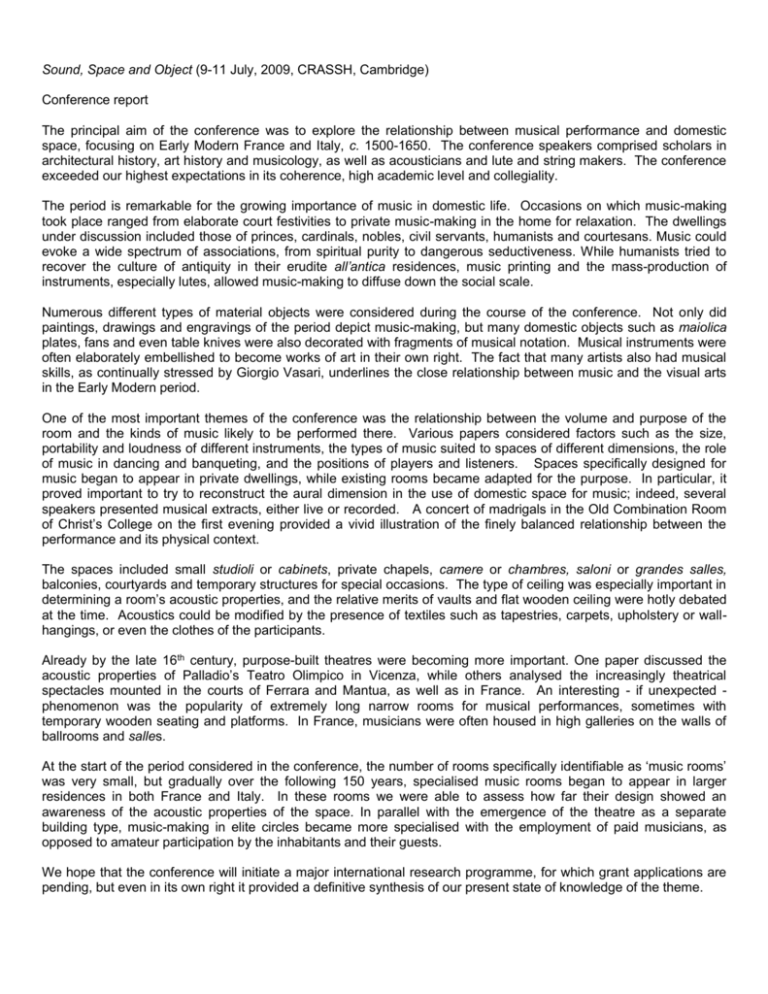
Sound, Space and Object (9-11 July, 2009, CRASSH, Cambridge) Conference report The principal aim of the conference was to explore the relationship between musical performance and domestic space, focusing on Early Modern France and Italy, c. 1500-1650. The conference speakers comprised scholars in architectural history, art history and musicology, as well as acousticians and lute and string makers. The conference exceeded our highest expectations in its coherence, high academic level and collegiality. The period is remarkable for the growing importance of music in domestic life. Occasions on which music-making took place ranged from elaborate court festivities to private music-making in the home for relaxation. The dwellings under discussion included those of princes, cardinals, nobles, civil servants, humanists and courtesans. Music could evoke a wide spectrum of associations, from spiritual purity to dangerous seductiveness. While humanists tried to recover the culture of antiquity in their erudite all’antica residences, music printing and the mass-production of instruments, especially lutes, allowed music-making to diffuse down the social scale. Numerous different types of material objects were considered during the course of the conference. Not only did paintings, drawings and engravings of the period depict music-making, but many domestic objects such as maiolica plates, fans and even table knives were also decorated with fragments of musical notation. Musical instruments were often elaborately embellished to become works of art in their own right. The fact that many artists also had musical skills, as continually stressed by Giorgio Vasari, underlines the close relationship between music and the visual arts in the Early Modern period. One of the most important themes of the conference was the relationship between the volume and purpose of the room and the kinds of music likely to be performed there. Various papers considered factors such as the size, portability and loudness of different instruments, the types of music suited to spaces of different dimensions, the role of music in dancing and banqueting, and the positions of players and listeners. Spaces specifically designed for music began to appear in private dwellings, while existing rooms became adapted for the purpose. In particular, it proved important to try to reconstruct the aural dimension in the use of domestic space for music; indeed, several speakers presented musical extracts, either live or recorded. A concert of madrigals in the Old Combination Room of Christ’s College on the first evening provided a vivid illustration of the finely balanced relationship between the performance and its physical context. The spaces included small studioli or cabinets, private chapels, camere or chambres, saloni or grandes salles, balconies, courtyards and temporary structures for special occasions. The type of ceiling was especially important in determining a room’s acoustic properties, and the relative merits of vaults and flat wooden ceiling were hotly debated at the time. Acoustics could be modified by the presence of textiles such as tapestries, carpets, upholstery or wallhangings, or even the clothes of the participants. Already by the late 16th century, purpose-built theatres were becoming more important. One paper discussed the acoustic properties of Palladio’s Teatro Olimpico in Vicenza, while others analysed the increasingly theatrical spectacles mounted in the courts of Ferrara and Mantua, as well as in France. An interesting - if unexpected phenomenon was the popularity of extremely long narrow rooms for musical performances, sometimes with temporary wooden seating and platforms. In France, musicians were often housed in high galleries on the walls of ballrooms and salles. At the start of the period considered in the conference, the number of rooms specifically identifiable as ‘music rooms’ was very small, but gradually over the following 150 years, specialised music rooms began to appear in larger residences in both France and Italy. In these rooms we were able to assess how far their design showed an awareness of the acoustic properties of the space. In parallel with the emergence of the theatre as a separate building type, music-making in elite circles became more specialised with the employment of paid musicians, as opposed to amateur participation by the inhabitants and their guests. We hope that the conference will initiate a major international research programme, for which grant applications are pending, but even in its own right it provided a definitive synthesis of our present state of knowledge of the theme.

